Advantages of a 401(k) Plan
If you know someone who is graduating from high school or college and entering the workforce, they may have the opportunity to open up a 401(k) retirement account through their new employer. In some cases, the employer will also offer matching contributions up to a certain percentage of the employee’s contributions.
While it sounds like a no-brainer to take advantage of such an employer benefit as early as possible, a low percentage of employees ages 25 and younger participate in their employer’s 401(k) plan. This participation rate is increasing as more employers establish auto-enrollment policies in their company-sponsored retirement plans, either voluntarily or due to changes in federal regulations.
It’s essential to teach young employees the benefit of investing early and often to set them up for financial security in the future. See our previous Advisor Insights article about the Advantage of Time for Investors.
401(k) implementations will vary by employer, and there are regulations related to contribution limits, distributions, and account transfers. The new employee may find it helpful to talk to a financial advisor to review their retirement savings plan options and build a plan.
Here are some key benefits to investing in a 401(k) plan.
Retirement Plans Offer Tax Advantages
One of the most important reasons to start investing in a retirement plan early is the tax breaks that come with it. By investing in a traditional 401(k), the employee can elect to have their contributions made before income taxes are taken out, deferring the payment of income taxes on their contributions and the plan’s earnings until they take distributions in the future. If they opt to invest in a Roth 401(k), the employee’s contributions are made after taxes are withheld, and they will pay no additional income taxes on the contributions or their account’s earnings when withdrawn upon retirement.
Potential Employer Contributions
Another incentive for investing in a 401(k) is employer contributions. Every employer is different, but many will offer some type of matching contribution for those who choose to participate in their sponsored retirement plan. Employer contributions can significantly increase the retirement plans value over time.
We encourage employees to try to contribute at least the amount their employer will match. For example, if the employer will match contributions up to 4% of the employee’s salary, then the employee should try to contribute at least 4% of their salary into their retirement plan, which will then be doubled by the employer’s match to a total contribution of 8% of their salary.
We encourage the employee to consider contributing more than the employer’s match amount to meet their long-term financial goals if they can afford to.
Automatic Contributions
Contributions are taken directly from the employee’s paycheck and deposited into their retirement account. This aligns with a common personal financial management philosophy of setting aside one’s savings before spending any of their income. Since an employee’s contributions are often based on a percentage of their compensation, the contributions will automatically increase as the employee’s compensation increases.
Retirement Security
The earlier a young employee starts to save, the more likely they’ll be able to comfortably retire when they get older. Compounding earnings increase over time, so the longer their retirement account is open, the greater the impact their early investments will have. Even if they need to stop contributing to their retirement plan because of unemployment or financial strain, the money they’ve already invested will continue to grow.
Alternative Options for Retirement Plans
If the employer doesn’t offer a sponsored 401(k) plan, the new employee should consider an Individual Retirement Account (IRA) plan instead. IRA plans offer similar benefits to 401(k)s — they gain interest over time, can take automatic contributions from paychecks and involve tax benefits. The employee can choose from a traditional IRA, which is tax-deductible, or a Roth IRA, which is not tax-deductible but has the benefit of no taxes on distributions during retirement.
Whatever career path a young person chooses, saving for retirement is an important step in their adult life. Their retirement savings options may seem overwhelming, so consulting with a financial advisor may be helpful to review the details of their retirement plan and to build a financial plan to meet their long-term savings goals.
*This content was developed from sources believed to be providing accurate information. The information provided is not intended as tax or legal advice, and readers are encouraged to seek advice from their own tax or legal counsel. Neither the information presented, nor any opinion expressed, constitutes a representation by us of a specific investment or the purchase or sale of any securities. Asset allocation and diversification do not ensure a profit or protect against loss in declining markets. This material was developed and produced by Eustace Advisors, based in part on material provided by Advisor Websites, to provide information on a topic that may be of interest. Copyright 2023 Eustace Advisors.
Resources

